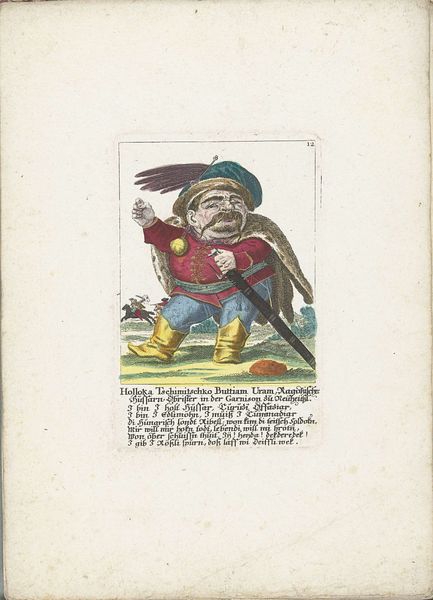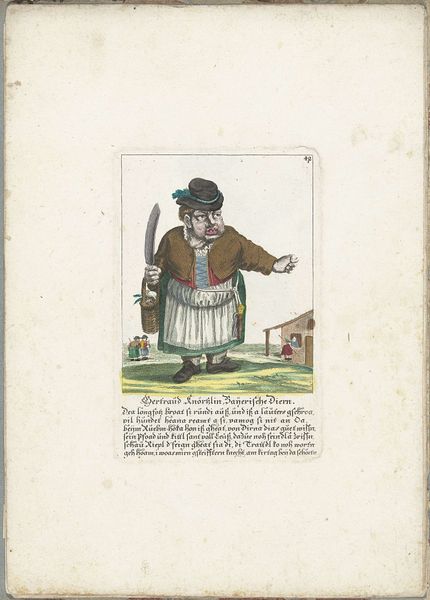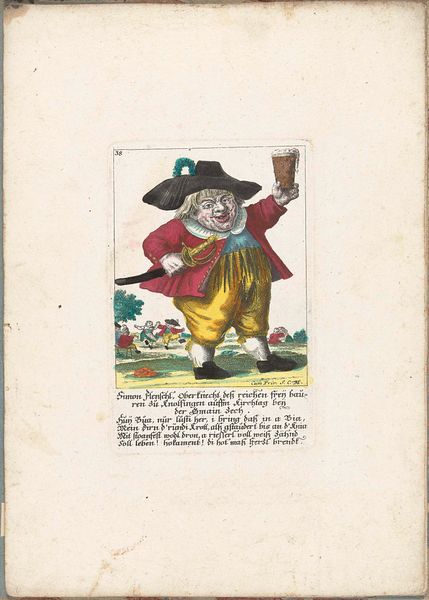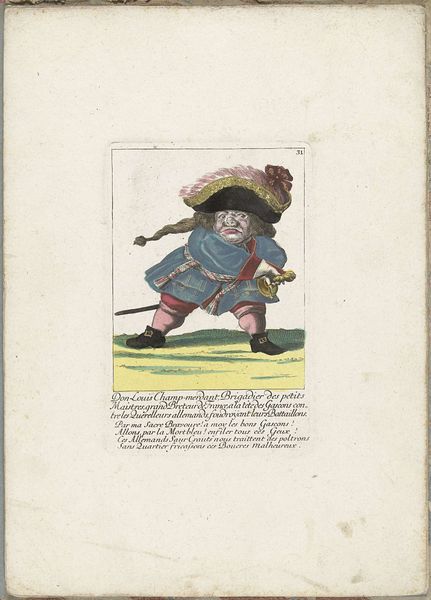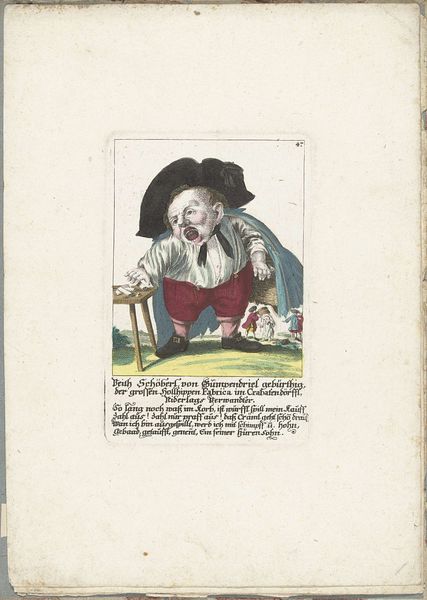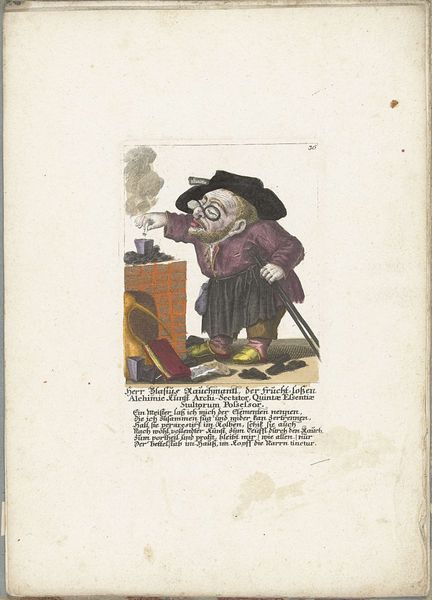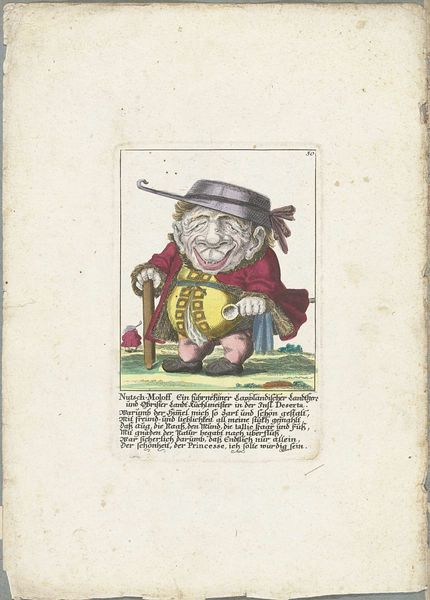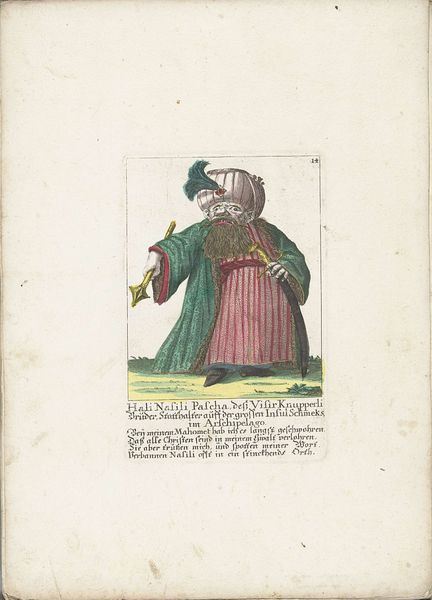
drawing, watercolor, ink
#
drawing
#
baroque
#
watercolor
#
ink
#
folk-art
#
watercolour illustration
#
genre-painting
#
watercolor
Dimensions: height 170 mm, width 110 mm, height 320 mm, width 225 mm
Copyright: Rijks Museum: Open Domain
Around 1710, Martin Engelbrecht created this hand-colored engraving of a dwarf, now held in the Rijksmuseum. The image offers a glimpse into the social attitudes and cultural perceptions of 18th-century Europe. The print depicts a woman with exaggerated features and a menacing expression, labeled as a dwarf and a "Wurthin", an archaic word which implies a female host of a tavern, referencing both her physical stature and her social role. The German text below the image suggests a commentary on social class and perhaps a critique of the lower classes. The work likely reflects the social hierarchies and prejudices prevalent in Europe at the time. The depiction of the dwarf is derogatory, playing into stereotypes and reinforcing the idea of certain groups as "others". Analysing prints like this alongside documents from the period, like court records and literature, allows us to better understand the social and cultural landscape of the past and the role art played in reflecting and shaping it.
Comments
No comments
Be the first to comment and join the conversation on the ultimate creative platform.

